We recently hosted a panel webinar covering the latest grocery trends we are seeing in the market. Find some of the insights from the webinar below!
The three biggest takeaways from the panelists were:
- All retailers are in a highly competitive race for Grocery market share.
- Digital (specifically pickup and delivery) is now woven into every party of brand strategy and conversations with buyers.
- Costing and pricing pressures are being felt across the industry.
With the increase in vaccinations (over 50% of U.S adults have received at least one dose of the COVID-19 vaccine) and lifting of mask mandates, retailers are facing the possibility of significant shifts in consumer shopping behaviors as life returns to a new “normal”. However, post-pandemic shopping behavior is not going to be a perfect return to pre-pandemic shopping habits. So much has changed during the past year that retail, and grocery shopping, in particular, will likely never look the same.
Retailers Prepare for the Changes Ahead
For Kroger, the key to success in a post-pandemic world seems to lie in customer retention. In the last couple of months, Kroger launched a new strategy to use customer retention to grow market share at a divisional level. Kroger benefitted from trip consolidation in 2020, so they saw the market share of trips go up.
Kroger has also committed to (and followed through on) making investments to win with price, even to the point of investing their own margin to win in key divisions (King Soopers, Ralph’s, Fred Meyer) and have lower prices than Walmart or Target.
Walmart has struggled with traffic and lost share, specifically in Grocery. However, a shift in focus to Online Pickup and Delivery (OPD) seemed to contribute to gains in market share, specifically in Grocery. The retailer invested significantly in optimizing the experience of picking up in-store to make it more seamless and increase adoption. The pandemic forced people to try pickup options, but adoption is likely here to stay. Walmart shifted to focus on inventory and fulfillment through those channels.
What to Expect Over the Next 90 Days
OPD is going to continue to be a huge focus area for Walmart. OPD rates for our clients are continuing to grow, indicating heavier traffic to OPD than Walmart.com. Suppliers should make sure they have the fundamentals nailed on all their items. It’s imperative to invest in digital relevancy and digital advertising to bolster OPD performance.
There is also a huge focus on maintaining instocks. Our replenishment experts work closely with Walmart teams to ensure focus on instocks meets the expectations of the Merchants.
The focus on in-stocks is happening at Kroger too. Historically buyers have worked separately from category managers. We’ve seen this change over the last year with a higher focus on instocks, especially looking over the next 3-6 months.
Preparing for Line Review Season at Walmart, Target, and Kroger
We have identified three top priorities for Kroger as we prepare our clients to go into line reviews. The first is innovation – especially in-store innovation with the return to physical shopping. The second is omnichannel promotion plans, specifically including KPM investments. The last is natural foods. Kroger is looking for and prioritizing share of shelf for natural food innovation and big launches.
Line review conversations at Walmart should keep an omnichannel focus, hitting on content health scores, investments in digital advertising, etc. We also encourage getting your items on Walmart.com to launch/try an item even if the modular is canceled, to build your story for the future.
Buyers are hungry for where the assortment is being purchased. It’s important to make assortment recommendations, especially in pickup/delivery vs. in-store.
Target is going through a meaningful SKU reduction right now to secure more shelf availability for their top moving items. This limits the assortment available online because >95% of Target’s digital sales are fulfilled in stores. It’s important to help buyers understand why they should protect assortment for items that sell well online, even if they don’t do well in stores.
Reduction of SKU/assortment and in-store labor are consistent across all retailers right now, so it becomes essential to talk to your buyers about total category strategy in all channels.
Overall, Suppliers will face many changes in the retail atmosphere and be encouraged to quickly pivot to meet retailer requirements alongside consumer demand. 2020 brought many challenges that Suppliers will continue to work through this year. At Harvest Group, we are confident in our abilities to guide current and future Clients through these challenging times. If you’re interested in learning more about Harvest Group services, fill out our Contact Form or email us at hello@harvestgroup.com


